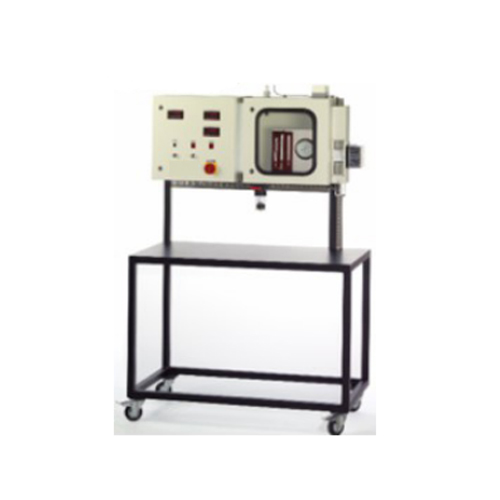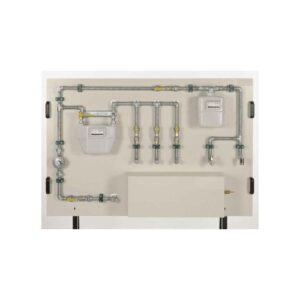TB-220804-V-4.9 Temperature and Humidity Measurement Methods Study Laboratory Equipment
I.Introduction of thermal dynamics
Thermodynamics is a discipline that studies the properties and laws of thermal motion of matter from a macroscopic perspective. It belongs to the branch of physics, and it and statistical physics constitute the macroscopic and microscopic aspects of thermal theory respectively.
Thermodynamics mainly studies the thermal properties of matter from the point of view of energy transformation. It suggests the macroscopic laws that energy follows when transforming from one form to another, and summarizes the thermal theory obtained from the macroscopic phenomena of matter. Thermodynamics does not investigate the microscopic structure of matter composed of a large number of microscopic particles, but only cares about the thermal phenomena exhibited by the system as a whole and the basic laws that must be followed for its change and development. It is satisfied to describe and determine the state of the system with a few macroscopic state quantities that can be directly felt and observed, such as temperature, pressure, volume, concentration, etc. Through a large number of observations and experiments on thermal phenomena in practice, it is found that there is a relationship between the macroscopic state quantities, and their changes are mutually restrained. In addition to the properties of matter, the constraint relationship must also follow some basic thermal laws that are applicable to any matter, such as the zeroth law of thermodynamics, the first law of thermodynamics, the second law of thermodynamics, and the third law of thermodynamics. Thermodynamics is the basis and starting point of the above-mentioned basic laws obtained from experimental observations, applying mathematical methods, and through logical deduction, to obtain the relationship between various macroscopic properties of matter and the direction and limit of macroscopic physical processes, so it belongs to phenomenology. theory, and the conclusions drawn from it have a high degree of reliability and generality.
II.Equipment shall cover at least the following laboratory works:
▪ study of thermoelectric phenomena: Seebeck (thermo-EMF), Peltier and Thompson
▪ study of the dependence of the amount of Peltier heat on the strength and direction of the supplied current, calculation of the Peltier coefficient from experimental data
▪ study of methods (contact and non-contact) of temperature measurement
▪ study of thermoelectric converter characteristics
▪ determination of the nominal static characteristic of a thermoelectric converter
▪ determination of the thermal inertia index of a thermoelectric converter
▪ determination of the free junction temperature effect on the static characteristic of a thermoelectric converter
▪ study of the characteristics of thermal resistance
▪ determination of the static characteristic of the resistance thermometer
▪ determination of the thermal inertia of a resistance thermometer
▪ determination of the calibration characteristics of the resistance thermometer
▪ determination of the influence of the resistance of a two-wire line
▪ humidity measurement methods
▪ measurement of relative humidity using the psychrometric effect
▪ measurement of relative humidity using a capacitive sensor based on a change in the dielectric constant of the medium with a change in humidity
Build
▪ tabletop
▪ laboratory
The equipment shall include at least the following main components: ▪ control unit
▪ multimeter with thermocouple
▪ temperature calibrator
▪ temperature calibrator
▪ temperature sensors set
▪ infrared pyrometer
▪ humidity calibrators
▪ psychrometric hygrometer
▪ climatic chamber
▪ electronic unit
▪ possibility to connect the equipment to laptop
▪ all designations, inscriptions and symbols on the equipment and devices shall be in Russian and/or English
Special software
▪ availability
▪ possibility to process data on computer
▪ interface in Russian and/or English
Power supply
▪ 220V±10%, 50Hz
▪ power cable, European standard
III.Delivery set
▪ Equipment shall be supplied as a complete delivery set and shall be compatible with design and functionality
▪ Delivery set shall include, but not be limited to:
1. Temperature and Humidity Measurement Methods Study Laboratory Equipment – 1 set
2. Laptop connecting cables – 1 set
3. Special software – 1 set
4. Laptop (CPU frequency of at least 2.3 GHz (at minimum load); 4 processor cores; at least 6 processor threads; AL3 Cache – 8 MB; RAM – ADDR4; at least 8 GB of memory; frequency at least 2933 MHz; SSD 512GB; M.2 PCIe NVMe; USB Type-A – 2 pcs.; USB Type C – 1 pc.; HDMI port; Wi-Fi and Bluetooth 5.0 adapters; display: 1920×1080; screen size 15.6 inches; 250 nits; IPS with LED backlight; matte screen; stereo speakers, microphone and built-in camera), including mouse, power supply with cable and bag for storage and carrying – 1 set
5. Description of possible laboratory works with Temperature and
Humidity Measurement Methods Study Laboratory Equipment application – 1 set
6. Tools for installation and maintenance of the Temperature and Humidity Measurement Methods Study Laboratory Equipment – 1 set
7. Accessories, spare parts and consumables not listed above, but recommended by the Manufacturer – 1 set











